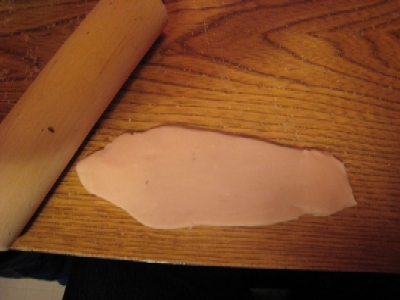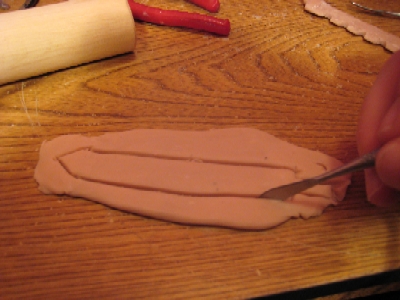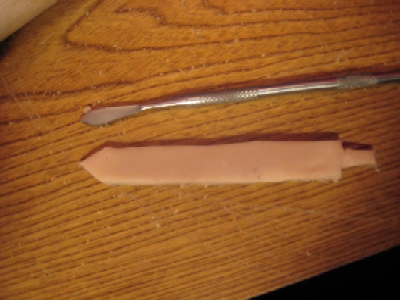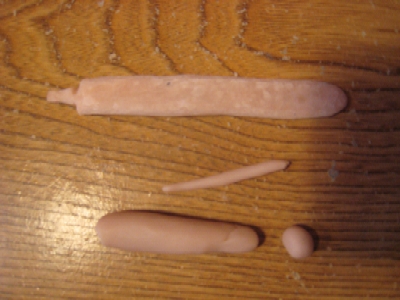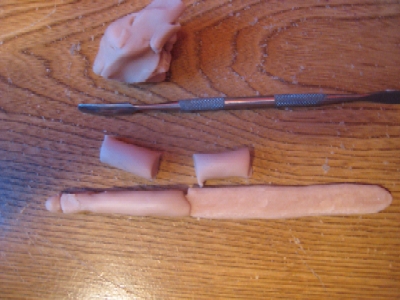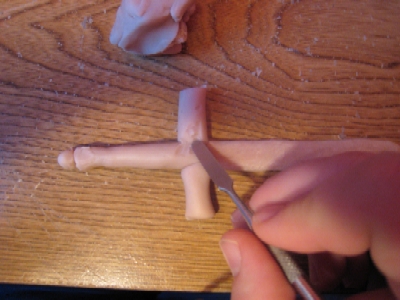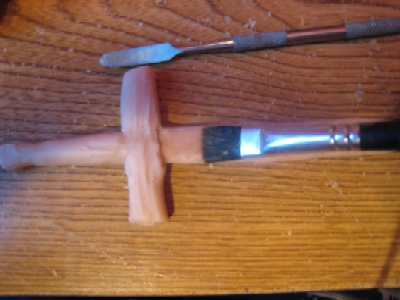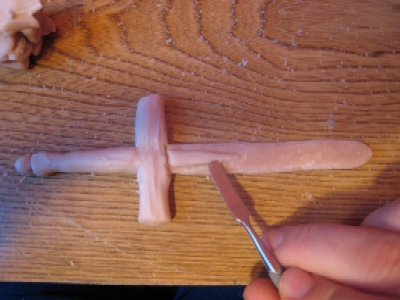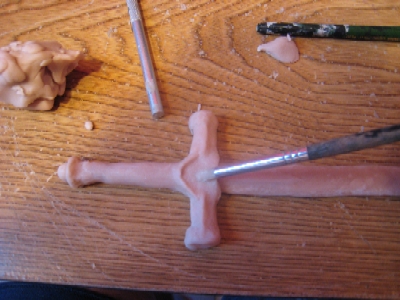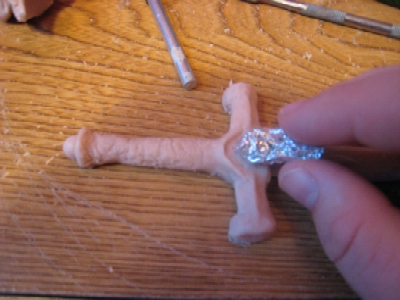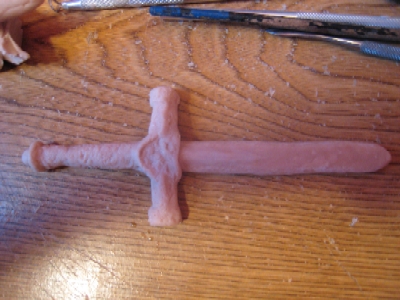Detailing the face
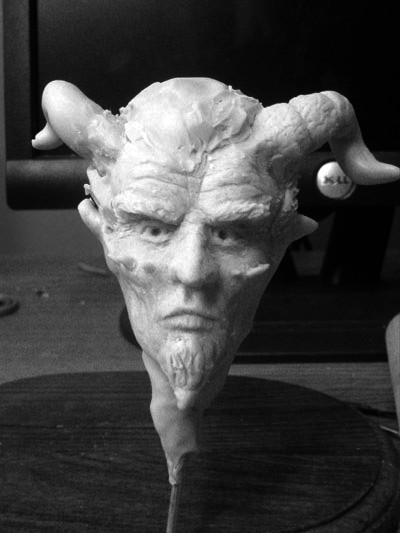
1. Pupils – pupils are really easy to do. I just take a pointed sculpting tool and make little circles into the eyes. You want to build out the pupils before you add the eyelids to the eyes. I’m still not done with the eyes
2. Eyelids – roll very thin snakes and lay one on the top portion of the eye and the other snake on the bottom of the eye. Play with their placement until you get the look you are looking for. Using one of my sculpting tools I push or blend the edges of the eyelids into the face
3. Lips – The individual lips are created by drawing a horizontal line into the clay. Once I separate out the top and bottom of the lips I then bulk out the lips by adding small amounts of clay. I keep bulking out the lips until I get a shape that I am looking for (if you do too much bulking just take a little away – pretty simple step but takes some time to do). Once I get a shape I am happy with I then add little faint vertical lines to the upper and lower lips (look at your lips in the mirror to see the little lines they contain).
4. Ears – At this stage I have only added small lumps of clay to represent where my ears will be placed.
5. Horns – the horns are pretty easy. They are just large snakes or cylinders of clay that I have twisted into a shape that I like. The horns are still pretty rough at this stage so I will be building them more out in the future.
Read the rest of this entry »

